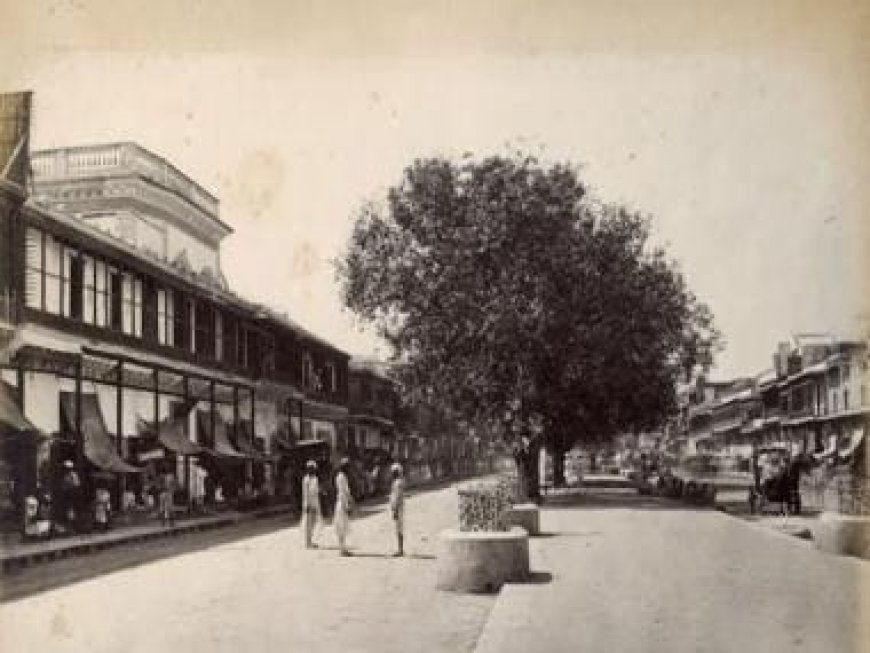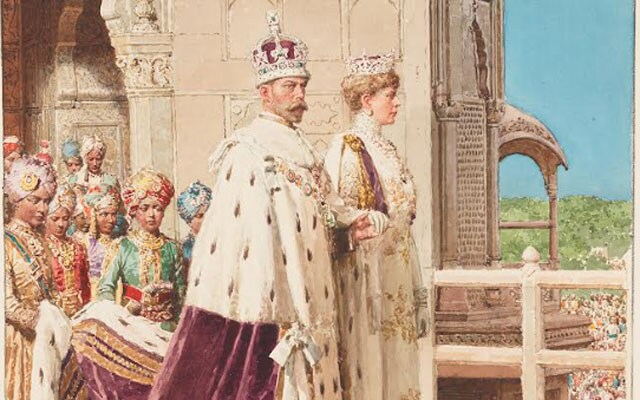DAG announces first exhibition drawn from the DAG archives curated by historians Rana Safvi and Swapna Liddle
DAG announces first exhibition drawn from the DAG archives curated by historians Rana Safvi and Swapna Liddle

Two eminent city historians, Swapna Liddle and Rana Safvi, combed through DAG’s archival collection of photographs, books and documents relating to the city’s history over the past two centuries to curate DAG’s first exhibition drawn from its archives focusing on the three Durbars of 1877, 1903, and 1911. With an abundance of material relating to the three Coronation Durbars that the British held in the city in the late colonial era, along with related material that shows how the pageantry and imagery of the Durbar drew on the city’s rich cultural and architectural heritage, DAG is proud to present Delhi Durbar: Empire, Display and the Possession of History—an exhibition that traces the trajectory of Delhi within the British imperial imagination, from the aftermath of the Revolt of 1857 to the proclamation of New Delhi in 1911.

While the historians in the past have analysed the ideology of the Delhi durbars, never-before has such a collection of the material culture of these events been brought together for display, even though, the British Delhi Durbars have been the subject of much recent scholarly study and re-evaluation. Heavily drawing the visual imagery of the durbars on the heritage of the city: on Mughal courtly ceremonies of the past—as the very name ‘durbar’ indicates—as well as the stately architecture of the Mughal and sultanate periods, the objects in this exhibition bring them materially present, through works by some of the leading artists and photographers of the period. Delhi had also, of course, been the scene of some of the bloodiest conflict during the Uprising of 1857, and the first of the durbars was held in Delhi just twenty years later, partly as a gesture of reconciliation and healing. Beginning with a ‘darshan’ of the great monuments of the city, as seen in paintings, photographs and postcards of the time, the exhibition then moves to images of Delhi in 1857, before proceeding to the three imperial durbars in turn.

Ashish Anand, CEO and MD, DAG, says, “History, in India, has been shaped by collective memory, but in recent times the rich repository of archives and their material culture have become useful tools for the dissemination of differing views and perspectives of the past. Revisiting history through material culture adds a fresh layer of understanding of what has passed before. I am excited that our first exhibition from the DAG Archives sheds new light on our colonial history—the three Delhi Durbars of the Raj and how they borrowed from and contributed to a vivid visual culture that ranges from imperial razzmatazz to the common man’s view of the scenes around him. This museum-quality exhibition opens new frontiers in our exploration of the nation’s history and points to the critical directions that DAG has begun to explore as part of its commitment to an exhibitions calendar that is not limited by commercial constraints.”

Rana Safvi comments, “The three Delhi Darbars held immense significance in Indian history as they played a pivotal role in shaping perceptions of British rule in India. These magnificent gatherings were characterized by their grandeur, with attendance of Indian royalty and foreign dignitaries. They served as an exhibition of British authority and opulence, which while stamping their authority also drew upon Mughal symbols and customs, underscoring their influence. This exhibition, drawing upon the archives of DAG, guides visitors through the rich history of not just these three Durbars, but also of India as a British colony.” Adds Swapna Liddle, “The story of the Coronation Durbars is very largely about the central importance of Delhi in the history of Indian empires, an importance that the British had to engage with, and finally acknowledge by shifting the capital of their Indian empire from Calcutta to Delhi.”

Alongside numerous photographs of Delhi and the three durbars, the exhibitions includes many other objects relating to them, from medals, souvenirs, postcards, official durbar directories, admittance tickets and books. For instance, H. C. Fanshawe’s Delhi Past and Present—one of the most popular guides to Delhi till date; G. F. Atkinson’s The Campaign in India, a volume of lithographs, tinted with watercolour on paper recounting the revolt of 1857; medals such as the Companion of the Most Eminent Order of the Indian Empire (CIE) made of enamel, gilt and silk; The History of the Imperial Assemblage at Delhi, 1877 by James Talboys Wheeler which is considered the official history of the event; Durbar, 1903—a printed book with 100 coloured illustrations by artist Mortimer Menpes with the text written by his daughter, Dorothy; Collectible figures from the Durbar of 1903 by William Britain, among an embroidered khwanposh (tray cover) and handcrafted durbar chairs and maps outlining the plan of the new capital.

Accompanied by an eponymous publication edited by historians and curators Swapna Liddle and Rana Safvi, Delhi Durbar: Empire, Display and the Possession of History opens on 23 September 2023 for six weeks and will remain on display until 6 November 2023.
Read all the Latest News, Trending News, Cricket News, Bollywood News,
India News and Entertainment News here. Follow us on Facebook, Twitter and Instagram.
What's Your Reaction?



























































